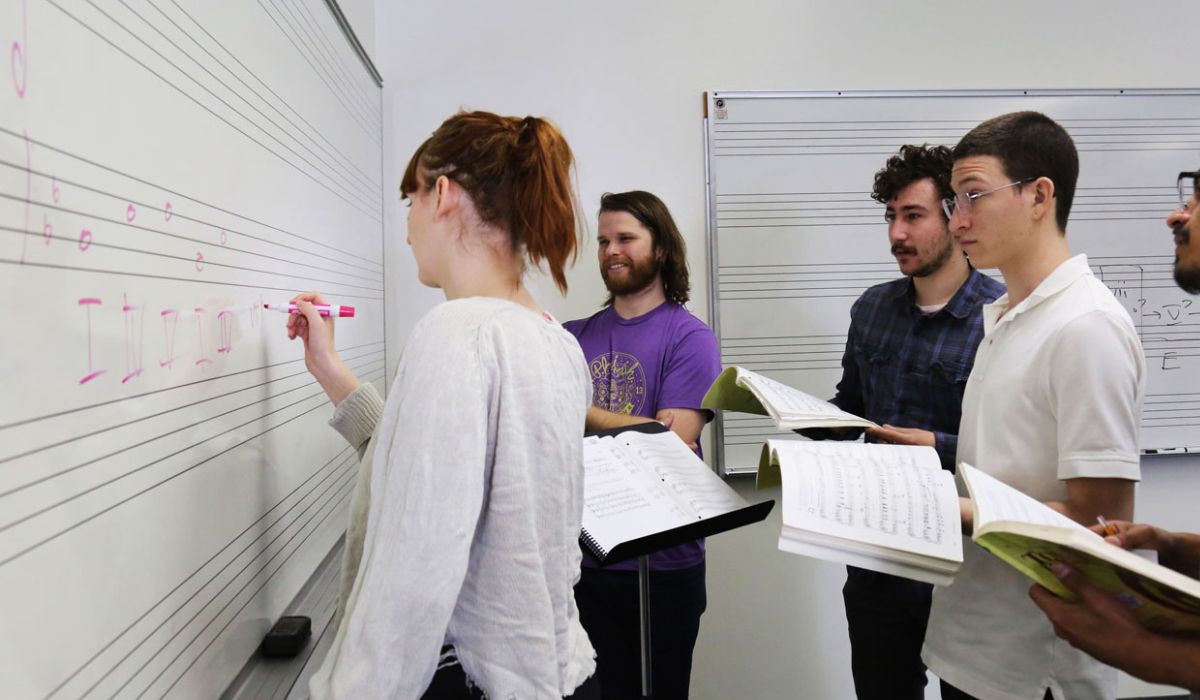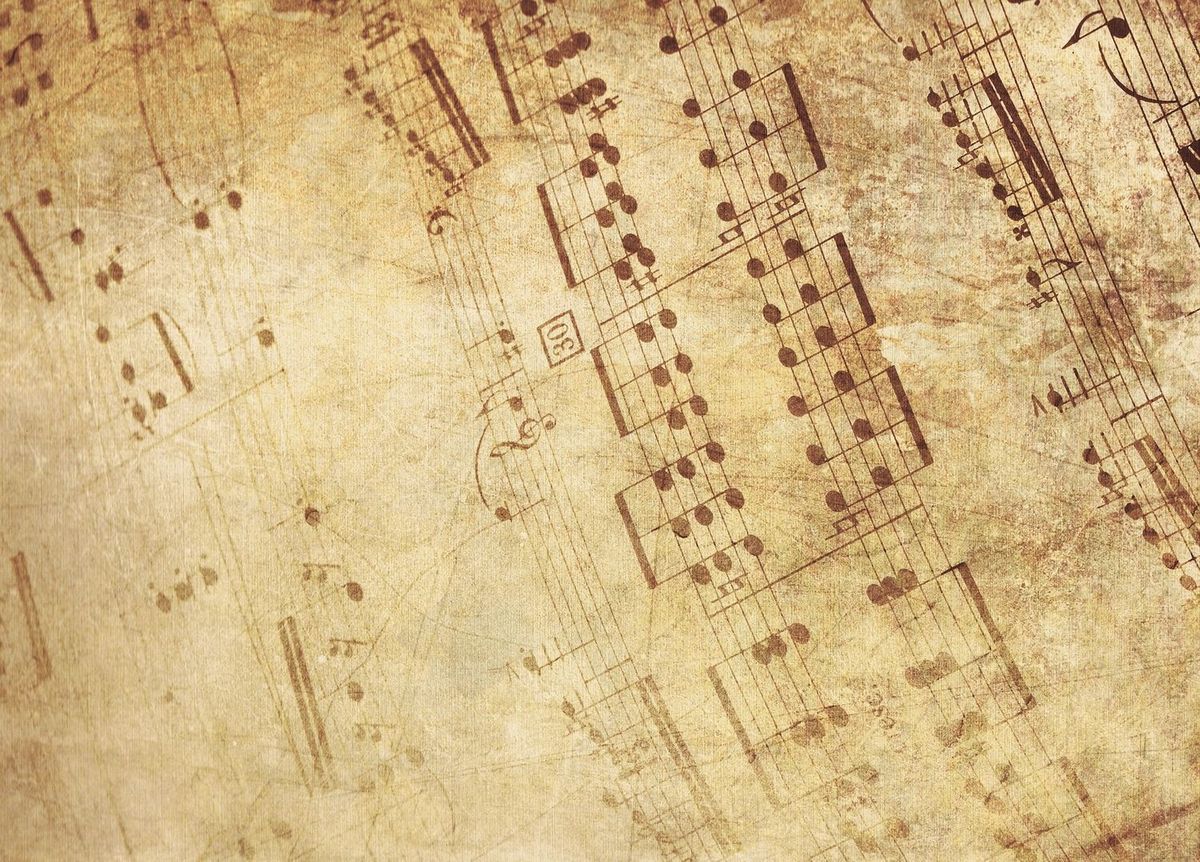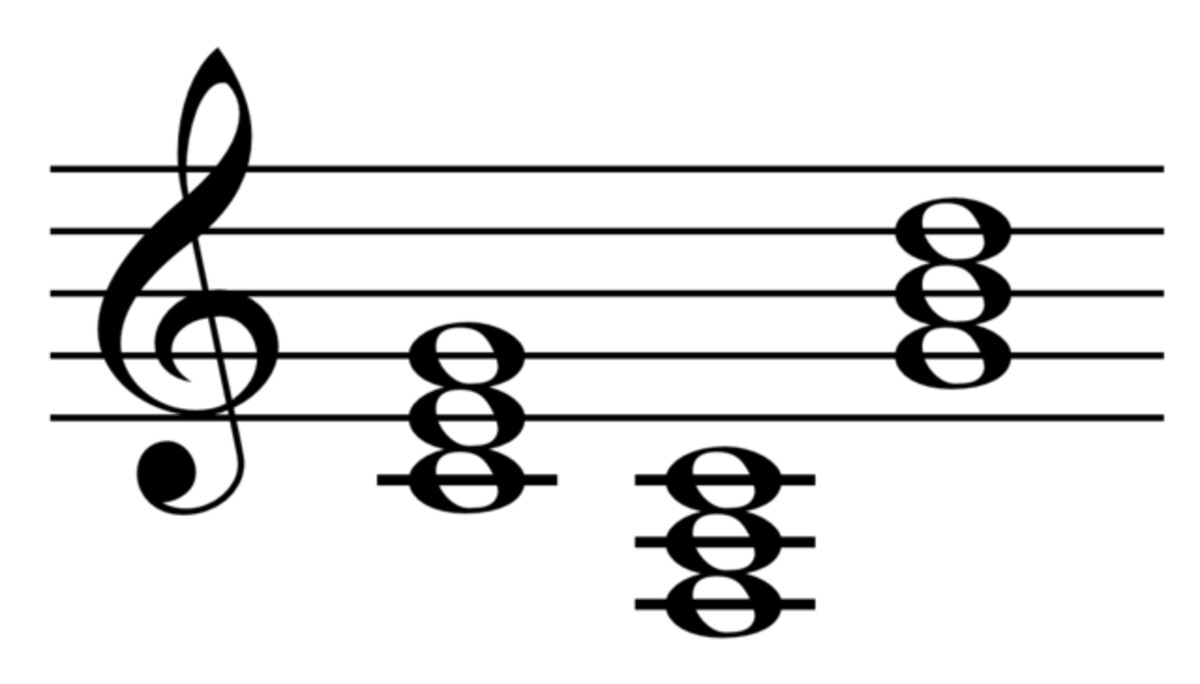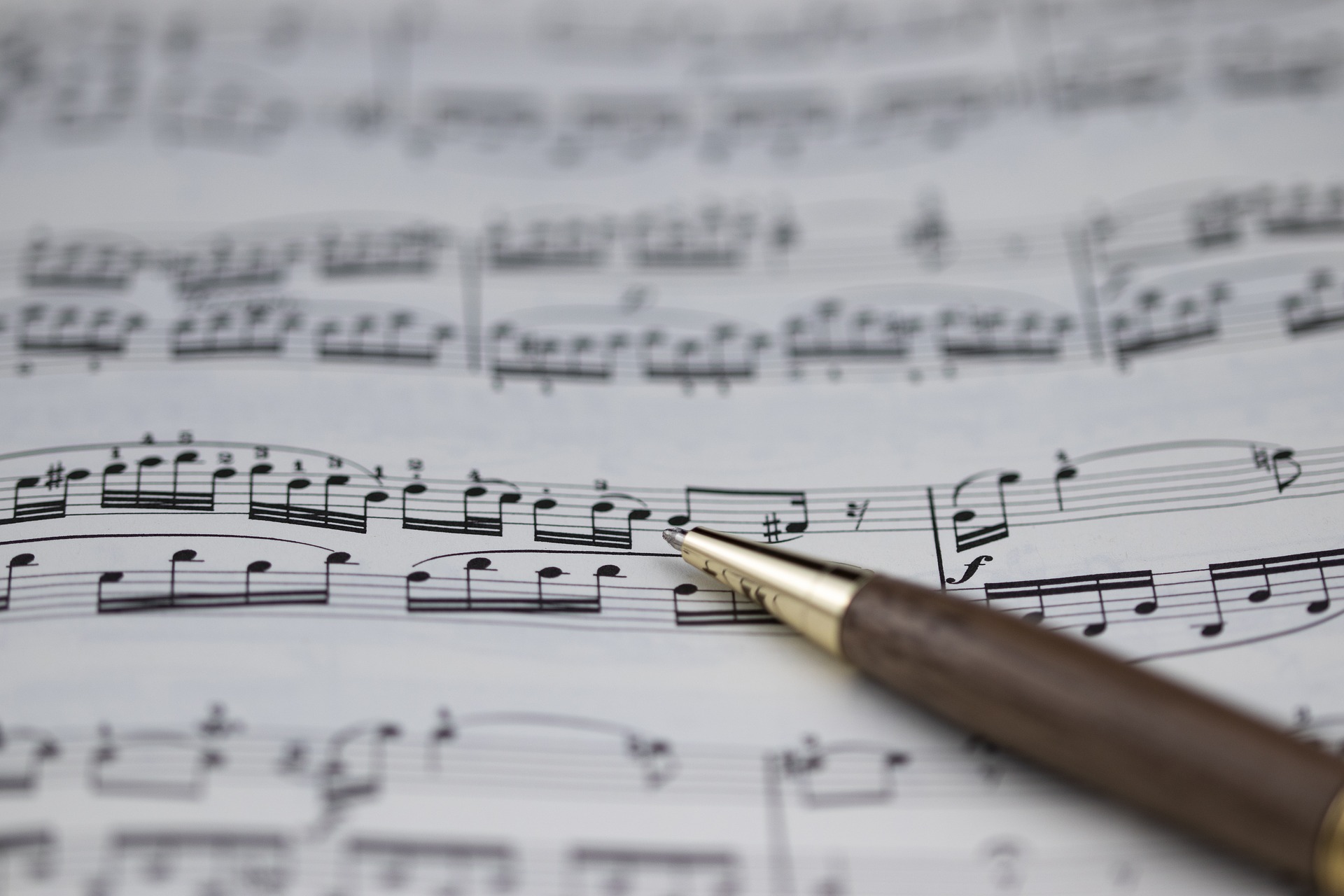Home>Production & Technology>Music Theory>What Is Taught In AP Music Theory


Music Theory
What Is Taught In AP Music Theory
Modified: February 1, 2024
Learn the fundamentals of music theory in AP Music Theory courses. Explore key concepts, notation, harmony, ear training, and composition. Enhance your musical knowledge with comprehensive AP Music Theory education.
(Many of the links in this article redirect to a specific reviewed product. Your purchase of these products through affiliate links helps to generate commission for AudioLover.com, at no extra cost. Learn more)
Table of Contents
- Introduction
- Basic Music Theory
- Sight Singing and Ear Training
- Notation and Notational Analysis
- Rhythm and Meter
- Scales and Key Signatures
- Intervals and Chords
- Harmony and Voice Leading
- Counterpoint and Musical Structure
- Musical Analysis
- Composing and Arranging
- Aural Skills Development
- Exam Preparation and Resources
- Conclusion
Introduction
Music Theory is a fascinating and essential aspect of studying and understanding music. It serves as the foundation for musicians and composers to communicate, analyze, and create music effectively. Advanced Placement (AP) Music Theory is an academic course that dives deeper into the intricacies of music theory, providing students with a comprehensive understanding of the subject.
AP Music Theory is typically offered to high school students who have a strong interest in music and wish to pursue further studies in the field. This course not only develops a student’s theoretical knowledge but also helps in fostering a deeper musical understanding.
In this article, we will explore the various components of AP Music Theory curriculum and the areas of study that are usually covered in the course. From basic music theory to advanced musical analysis and composition, AP Music Theory provides students with an in-depth exploration of the principles and structures that underlie music.
Whether you aspire to pursue a career in music or simply have a passion for the subject, AP Music Theory will equip you with the necessary tools to further your understanding and appreciation of music. Let’s delve into the fascinating world of AP Music Theory and explore what this course entails.
Basic Music Theory
Basic music theory is the foundation upon which AP Music Theory builds. In this section of the course, students learn the fundamental concepts and principles of music, including notation, terminology, and the structure of musical elements.
Students start by learning how to read and interpret musical notation, including understanding the staff, clefs, note values, and rhythmic patterns. They also become familiar with musical terminology and symbols used in sheet music, such as dynamics, articulations, and tempo markings.
Additionally, students delve into the structure of music, including the organization of notes into scales and key signatures. They learn about the major and minor tonalities and gain an understanding of how scales and key signatures affect the overall mood and harmony of a piece.
Basic musical concepts such as intervals, chords, and triads are introduced, enabling students to recognize and identify their sounds in musical compositions. They learn about the qualities of different chords, such as major, minor, diminished, and augmented, and understand how these chords are built and used in harmonic progressions.
Furthermore, students explore the concept of melody and how it is constructed using scales, intervals, and rhythmic patterns. They learn about melodic contour, phrase structure, and the use of motifs in creating memorable melodies.
Overall, the basic music theory section of AP Music Theory provides students with a solid foundation in understanding the elements of music, enabling them to analyze and interpret musical compositions more effectively.
Sight Singing and Ear Training
Sight singing and ear training are essential skills for any musician, and they play a significant role in the curriculum of AP Music Theory. These skills help students develop their musical perception and improve their ability to reproduce and understand musical sounds.
In the sight singing component of the course, students learn to read and sing music at first sight without the aid of an instrument. They become familiar with solfege, a system of syllables used to represent musical pitches, and learn to associate these syllables with specific notes on the staff. Through practicing sight singing exercises, students develop the ability to accurately pitch and sing melodies, intervals, and rhythmic patterns.
Ear training, on the other hand, focuses on developing a student’s ability to identify and reproduce musical elements by ear. This includes recognizing intervals, chords, melodic patterns, and rhythmic patterns solely by listening to them. Through intensive ear training exercises, students sharpen their listening skills and develop a keen sense of tonal and rhythmic perception.
Both sight singing and ear training go hand in hand, as they reinforce each other to enhance a student’s overall musicianship. By being able to accurately sing and identify musical elements, students can better analyze and understand the music they encounter, which is an invaluable skill in AP Music Theory and beyond.
The sight singing and ear training component of AP Music Theory may involve various exercises, including melodic dictation, harmonic dictation, rhythm dictation, and interval recognition. These exercises train students to listen attentively, internalize musical patterns, and accurately reproduce them vocally or through written notation.
Ultimately, sight singing and ear training help students become more confident and proficient musicians, enabling them to engage with music on a deeper, more intuitive level.
Notation and Notational Analysis
Notation is the written representation of music, and it serves as the universal language for musicians to communicate their musical ideas. In AP Music Theory, students delve into the study of notation and its analysis, enabling them to understand and interpret musical scores with accuracy and precision.
Students learn to read and interpret complex musical scores, including time signatures, key signatures, dynamics, articulations, and various style markings. They become proficient in analyzing the structure and form of pieces, identifying repeat signs, sections, and key changes.
Notational analysis involves closely examining a musical score in order to deduce its underlying musical principles. Students explore how composers use notation to convey their intentions, interpret musical gestures, and portray specific emotions or ideas.
During the notational analysis process, students analyze elements such as melodic contour, rhythmic patterns, harmonic progressions, and use of textures. They identify and analyze various musical devices, such as motifs, repetition, variation, and contrast, to understand the compositional choices made by the composer.
Furthermore, students learn to transcribe music from recordings into written notation, allowing them to capture the nuances and complexities of a performance. This skill enhances their ability to study and analyze music that may not be readily available in written form.
Notation and notational analysis are vital skills that enable students to gain insights into the composer’s intentions and to communicate effectively with other musicians. By mastering these skills, students can fully appreciate the complexities and nuances of musical compositions and develop a deeper understanding of music as an art form.
Rhythm and Meter
Rhythm and meter are fundamental aspects of music that contribute to its structure and character. In the AP Music Theory curriculum, students explore the intricate relationship between rhythm and meter, developing a solid understanding of rhythmic patterns and their organization within a musical composition.
Students learn to analyze and interpret different types of rhythmic notation, including note values, rests, and rhythmic patterns. They study the concept of beat and its subdivisions, understanding how notes and rests are grouped to create rhythmic patterns.
AP Music Theory delves into the study of meter, which refers to the organization of beats into recurring patterns or measures. Students become familiar with various time signatures, such as 4/4, 3/4, and 6/8, and learn how to identify and notate these time signatures accurately.
Furthermore, students explore syncopation, the deliberate disruption of the regular metrical pattern to create rhythmic interest and tension. They analyze syncopated rhythms in different musical styles and genres, understanding their impact on the overall feel and groove of a piece.
Through rhythmic dictation exercises, students develop their ability to notate and reproduce complex rhythmic patterns accurately. They also explore the concept of polyrhythm, understanding how multiple independent rhythms can coexist and interact within a musical composition.
Understanding rhythm and meter is crucial in interpreting and performing music with precision and accuracy. It enables musicians to develop a sense of pulse, maintain a steady tempo, and effectively communicate with other performers.
Moreover, studying rhythm and meter in AP Music Theory helps students in analyzing and identifying rhythmic motifs, variations, and patterns within a musical composition. This knowledge contributes to their overall understanding of the compositional structure and helps them appreciate the rhythmic intricacies present in different musical genres and styles.
Scales and Key Signatures
Scales and key signatures form the foundation of tonal music and play a significant role in the study of music theory. In the AP Music Theory curriculum, students explore scales and key signatures, gaining a comprehensive understanding of how they shape the melodic and harmonic aspects of a musical composition.
Students start by learning about the major and minor scales, understanding their unique patterns of whole and half steps. They become familiar with the characteristics of major and minor scales, including their tonalities, intervals, and emotions associated with each.
Once students are proficient in identifying and constructing major and minor scales, they progress to studying key signatures. Key signatures are a set of sharps or flats placed at the beginning of a musical staff, indicating the tonality of a composition. Students learn to identify key signatures and understand their relationship to the corresponding major or minor keys.
In addition to major and minor scales, students also explore other types of scales, such as chromatic, pentatonic, and modes. They analyze these scales and gain an understanding of their unique characteristics and musical applications.
Understanding scales and key signatures is crucial in analyzing and interpreting music. Students learn to recognize the tonal center of a piece, identify the key in which it is written, and determine the relationships between the pitches and chords within that key.
Moreover, scales and key signatures play a pivotal role in harmonizing melodies and creating chord progressions. Students learn to harmonize scales and melodies using chords derived from the corresponding key, expanding their understanding of harmony and voice leading.
Overall, the study of scales and key signatures in AP Music Theory equips students with the knowledge and skills necessary to analyze, interpret, and compose music within tonal frameworks. It provides a solid foundation for understanding the tonalities and harmonic progressions present in a wide range of musical compositions.
Intervals and Chords
Intervals and chords are essential building blocks of music, contributing to its harmonic richness and complexity. In the AP Music Theory curriculum, students delve into the study of intervals and chords, gaining a deep understanding of their characteristics, qualities, and functions within a musical composition.
Intervals are the distances between two pitches, and they are classified based on their size and quality. Students learn to identify and notate intervals, understanding their specific sound and relation to a given tonic pitch.
Students study different types of intervals, including major, minor, perfect, augmented, and diminished intervals. They learn how intervals are measured in terms of half steps and whole steps, and how they contribute to the melodic and harmonic structures of a piece.
Chords are groups of three or more pitches played simultaneously, and they provide the harmonic foundation of music. Students explore various types of chords, including major, minor, diminished, and augmented chords, understanding their unique intervallic relationships and qualities.
Through harmonic analysis, students learn to recognize and analyze chords within a musical composition. They identify chord progressions, understand the principles of voice leading, and explore how chords function in different harmonic contexts.
In addition to triads, students also study seventh chords and extended chords. They gain an understanding of the added extensions, such as the seventh, ninth, eleventh, and thirteenth, and how these extensions alter the color and character of a chord.
Understanding intervals and chords is vital for analyzing and composing music. By identifying intervals and chords, students can determine the harmonic progressions and structural elements present in a piece, enhancing their overall comprehension and interpretation.
Furthermore, knowledge of intervals and chords provides a strong foundation for improvisation and composition. Students can experiment with different combinations of intervals and chords to create harmonically rich and engaging musical ideas.
By studying intervals and chords in AP Music Theory, students develop a deep understanding of the harmonic language of music, enabling them to analyze, perform, and create music with greater proficiency and artistic expression.
Harmony and Voice Leading
Harmony and voice leading are essential components of music that contribute to its richness and beauty. In the AP Music Theory curriculum, students delve into the study of harmony and voice leading, gaining a deep understanding of how different musical voices interact to create harmonically rich and cohesive compositions.
Harmony refers to the simultaneous sounding of multiple pitches to create chords and progressions. Students study the principles of harmonic progression, including the concepts of tonic, dominant, and subdominant functions. They learn to analyze chord progressions, recognizing common harmonic patterns and understanding their influence on the overall structure of a composition.
Students explore harmonic relationships within scales and key signatures, understanding how different chords relate to the underlying tonality. They delve into the principles of chord formation and functional harmony, learning how to analyze and interpret harmonic progressions in various musical styles and genres.
Voice leading focuses on the smooth and logical movement of individual melodic lines within a piece of music. Students learn the techniques and principles of voice leading, understanding how to move between chords and progressions while maintaining good voice leading practices.
Through voice leading analysis, students examine how melodic lines create harmonic tension and resolution. They learn to recognize and analyze various types of chord inversions, identify incorrect and dissonant voice leading, and make appropriate adjustments to create smoother and more pleasing musical lines.
The study of harmony and voice leading in AP Music Theory helps students understand the interplay between melody and harmony. They learn how melodic lines interact with harmonic progressions, how chords influence the direction and character of melodies, and how to create balance and coherence in their own compositions.
Furthermore, understanding harmony and voice leading enhances a student’s ability to analyze and interpret music. By recognizing harmonic patterns and voice leading techniques, students can effectively convey the emotional and structural elements of a musical composition.
Overall, the study of harmony and voice leading in AP Music Theory provides students with a solid foundation in understanding the intricate relationship between melody and harmony, enabling them to create and analyze music with depth, complexity, and artistic expression.
Counterpoint and Musical Structure
Counterpoint is the art of combining independent melodic lines to create harmonically and contrapuntally rich music. In the AP Music Theory curriculum, students explore counterpoint and its role in shaping the musical structure of compositions.
Students learn the principles and techniques of counterpoint, including species counterpoint. They study the rules and guidelines for creating melodic lines that move in a contrapuntal manner, observing factors such as consonance, dissonance, and the proper resolution of dissonant intervals.
Through analysis and composition exercises, students practice creating contrapuntal lines that interweave harmonically and melodically, while adhering to the rules of counterpoint. They develop a keen sense of line independence, balancing melodic motion and harmonic coherence.
Understanding counterpoint is closely tied to studying musical structure. Students explore the different forms and structures present in a variety of musical compositions, including binary form, ternary form, rondo form, and sonata form. They learn how musical ideas are developed, repeated, and transformed within these structures.
Students analyze musical compositions, identifying thematic material, motifs, and variations. They study the methods composers use to transition between sections, build tension and release, and create musical coherence and unity.
The study of counterpoint and musical structure empowers students to appreciate the formal organization and development of music. They can identify recurring themes and motifs, recognize the relationships between different sections, and understand the overall architecture of a composition.
Moreover, the knowledge of counterpoint and musical structure enables students to compose their own music with greater fluency and confidence. They can explore different forms and experiment with various contrapuntal techniques to create unique and engaging musical pieces.
By immersing themselves in the study of counterpoint and musical structure, students develop a deeper understanding of the art of composition and gain the skills necessary to analyze, interpret, and create music with a heightened sense of craftsmanship and artistic expression.
Musical Analysis
Musical analysis is a critical skill in understanding and interpreting the complexities of a musical composition. In the AP Music Theory curriculum, students learn various methods and techniques to analyze music, allowing them to delve deeper into its structure, harmony, melody, and form.
Students study different approaches to musical analysis, depending on the style, genre, and time period of the composition. They learn to analyze and identify key musical elements, such as chord progressions, melodic patterns, rhythmic motifs, and harmonic structures.
Through analysis, students gain a deeper appreciation for the composer’s intentions, artistic choices, and the techniques employed to create musical effects and convey emotions. They explore how musical elements interact to shape the overall character and impact of a composition.
Additionally, students engage in formal analysis, examining compositional forms and structures within musical works. They identify sections, thematic material, key changes, and developmental techniques used by the composer to create unity and variation.
Students also expand their analytical skills by comparing and contrasting different interpretations and performances of the same composition. They may analyze recordings, live performances, or arrangements of a piece, observing how different musicians interpret and express the music differently.
Musical analysis not only enhances a student’s understanding of a particular composition but also deepens their overall musical knowledge, fostering a broader comprehension of music theory and its application across different genres and styles.
By mastering the skill of musical analysis, students can uncover the intricate layers of a musical composition, develop a more nuanced interpretation, and articulate their observations and insights with clarity and precision.
Moreover, musical analysis provides a foundation for musicians to engage in creative endeavors such as composition, arrangement, and improvisation. With a thorough understanding of musical structure and elements, students can confidently experiment and manipulate these elements in their own musical creations.
Overall, musical analysis in AP Music Theory enables students to approach music with a discerning ear and a deeper appreciation for the artistry and craftsmanship inherent in musical compositions.
Composing and Arranging
Composing and arranging are integral components of music creation, allowing musicians to express their creativity and bring their musical ideas to life. In the AP Music Theory curriculum, students have the opportunity to explore the art of composition and arrangement.
During the course, students learn the elements of music composition, including melody, harmony, rhythm, and form. They study different compositional techniques and approaches used by composers of various styles and genres.
Students engage in composition exercises, where they create original musical pieces or develop variations on existing themes. They apply their knowledge of music theory to construct melodies, harmonies, and rhythms that convey their artistic vision and emotional intent.
Arranging is another aspect of music creation that students explore in the AP Music Theory curriculum. Arranging involves taking an existing piece of music and adapting it for different instruments, voices, or ensembles.
Students learn the techniques of instrumentation, voicing, and orchestration to effectively arrange music for different musical groups. They analyze existing arrangements to understand the choices made by arrangers in terms of texture, dynamics, and timbre.
Through composing and arranging, students are encouraged to embrace their creative voice and develop their unique musical style. They gain practical experience in translating their musical ideas into tangible compositions or arrangements.
Furthermore, composing and arranging foster a deeper understanding of music theory, as students are required to apply their knowledge of harmony, rhythm, and form in real-world musical contexts. They learn to critically analyze their own compositions and arrangements, refining and improving their musical ideas.
Beyond the classroom, composition and arrangement skills have practical applications in various musical settings. Whether writing original songs, arranging music for a band, or creating scores for film or theater, these skills empower musicians to engage in a wide range of professional opportunities.
The study of composition and arrangement in AP Music Theory nurtures students’ creativity, hones their musical skills, and broadens their capacity for artistic expression. It helps students become well-rounded musicians, capable of both interpreting and creating music with depth, innovation, and personal style.
Aural Skills Development
Aural skills development is a vital component of the AP Music Theory curriculum, focusing on the cultivation of students’ listening and auditory perception abilities. Aural skills include the ability to recognize and identify musical elements such as intervals, chords, melodies, rhythms, and timbres by ear.
Students participate in various exercises and activities designed to improve their aural skills. These may include melodic dictation, where students transcribe melodies by ear, rhythmic dictation, where students recreate complex rhythmic patterns accurately, and harmonic dictation, where students identify and notate chords and progressions.
Through aural skills development, students sharpen their sense of pitch, rhythm, and timbre, allowing them to tune their ears to the subtle nuances and intricacies of music. They enhance their ability to recognize musical patterns and structures, and develop a deeper understanding of how these elements work together to create the overall composition.
Aural skills development also plays a crucial role in sight singing and performance. By developing their listening skills, students become better equipped to accurately sing and reproduce melodies, rhythms, and harmonic progressions. They learn to internalize these musical elements and express them with precision and musicality.
Furthermore, aural skills development nurtures students’ musical memory and analytical abilities. They learn to listen to a piece of music and identify its unique characteristics, such as key, meter, tonality, and formal structure. This helps them in analyzing and interpreting music more effectively.
Improving aural skills serves musicians in various musical contexts, from performing live on stage to composing and arranging music. A well-developed ear allows musicians to improvise, harmonize, and interact with other musicians in a more intuitive and expressive way.
Aural skills development is an ongoing process that requires regular practice and exposure to a wide range of musical styles and genres. The AP Music Theory curriculum provides students with ample opportunities to refine and enhance their aural skills, preparing them for advanced musical study and future musical endeavors.
Exam Preparation and Resources
Preparing for the AP Music Theory exam requires diligent study and practice to ensure a thorough understanding of the subject matter. Fortunately, there are various resources available to help students succeed in their exam preparations.
One valuable resource is the AP Music Theory textbook. This comprehensive guide provides a structured approach to learning the required curriculum, covering topics such as music theory fundamentals, notation, harmony, composition, and analysis. The textbook often includes practice exercises, sample questions, and helpful explanations to reinforce concepts.
Practice exams are another essential resource for exam preparation. These practice tests simulate the actual AP Music Theory exam, allowing students to familiarize themselves with the format, time constraints, and types of questions they can expect. By taking practice exams, students can assess their strengths and weaknesses, identify areas for improvement, and become more comfortable with the exam’s content and structure.
Online resources and educational websites offer valuable study materials and additional practice opportunities. These platforms provide instructional videos, tutorials, interactive quizzes, and downloadable worksheets that reinforce key concepts and allow for self-paced learning. YouTube channels dedicated to music theory also offer informative videos that present explanations and demonstrations of various topics.
Participating in study groups or finding a study partner can be beneficial for collaborative learning and review. Students can discuss and explain concepts to one another, work through practice questions as a team, and support each other in areas of difficulty.
Seeking guidance from a music teacher or tutor is highly recommended. An experienced instructor can provide personalized instruction, clarify complex topics, and offer feedback on compositions and arrangements. They can also guide students in developing effective study strategies and approaches to exam preparation.
Additionally, attending workshops, seminars, or summer music programs focused on AP Music Theory can provide valuable opportunities for in-depth study and interaction with fellow music theory enthusiasts. These programs often offer intensive instruction, guest lectures, and opportunities to collaborate and perform with other students.
Lastly, consistent practice and review are crucial for exam success. Regularly dedicating time to practicing sight singing, ear training exercises, composition, and analysis will strengthen students’ understanding and application of the concepts covered in the exam.
By utilizing a combination of textbooks, practice exams, online resources, study groups, personalized instruction, and consistent practice, students can be well-prepared and confident for the AP Music Theory exam.
Conclusion
AP Music Theory is a comprehensive and engaging course that deepens students’ understanding of music theory and fosters their musical growth. From the exploration of basic music theory concepts to in-depth analysis and composition, this course equips students with invaluable skills and knowledge.
Throughout the curriculum, students develop a solid foundation in essential areas of music theory, such as notation, rhythm, scales, intervals, chords, harmony, and musical analysis. They also refine their aural skills, enhancing their ability to recognize and interpret music by ear.
AP Music Theory not only prepares students for the AP exam but also strengthens their overall musicianship and musical literacy. It enables them to engage with music critically, creatively, and expressively, whether as performers, composers, or music enthusiasts.
By gaining insight into the intricacies of musical structure, harmony, and melody, students can unravel the captivating complexities that lie within musical compositions. They learn to appreciate the rich history and diverse genres of music, exploring how different musical elements come together to create unique and meaningful musical experiences.
In conclusion, AP Music Theory offers students an opportunity to delve into the depths of music theory, developing their analytical, compositional, and listening skills. The knowledge and skills gained through this course provide a strong foundation for future musical endeavors, whether pursuing a career in music or simply nurturing a lifelong passion for the art.
Through the study of AP Music Theory, students come to realize that music is not just a series of notes and rhythms but a profound expression of human emotion, creativity, and culture. It is a language that speaks to the deepest corners of our hearts and connects us on a universal level.
So, let the journey into the world of AP Music Theory be a fulfilling and enriching one, offering endless possibilities for musical exploration and growth. Embrace the joy of learning, creating, and experiencing music, and unlock the transformative power that music holds.











